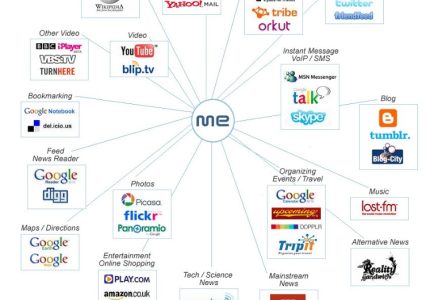Understanding Service Website Design
Understanding service website design is essential for creating an effective online presence that attracts and engages visitors. A well-designed service website communicates professionalism, clarity, and trustworthiness, making it easier for potential clients to find the information they need and take desired actions. By focusing on user experience, visual appeal, and seamless functionality, businesses can differentiate themselves in a competitive digital landscape and foster lasting relationships with their customers.
Importance of User-Centered Design
Understanding service website design involves creating an online platform that effectively communicates the value of a service while providing a seamless user experience. It encompasses visual aesthetics, functionality, and content organization to attract and retain visitors.
One of the most critical aspects of service website design is the importance of user-centered design. This approach ensures that the website is tailored to meet the needs, preferences, and behaviors of its users, making navigation intuitive and engagement meaningful.
- Enhances user satisfaction by making information easy to find and accessible.
- Increases trust and credibility through clear and professional presentation.
- Boosts conversions by guiding users smoothly towards desired actions.
- Reduces frustration and bounce rates by providing a straightforward and enjoyable experience.
- Builds loyalty and encourages repeat visits by understanding user needs and preferences.
Key Elements of Effective Service Websites
Understanding service website design is essential for creating an engaging and efficient online presence that attracts and retains customers. An effective service website should clearly convey the value of the offerings, making it easy for visitors to navigate and find the information they need. The design must align with both the brand identity and the needs of the target audience to ensure a seamless user experience.
Key elements of effective service websites include a clean and professional layout that enhances readability and visual appeal. Clear calls-to-action guide visitors towards desired actions, such as contacting the business or requesting a quote. Responsive design ensures the website performs well across all devices, providing a consistent experience on desktops, tablets, and smartphones. High-quality images and concise content help communicate the service benefits effectively, while easy-to-find contact information fosters trust and encourages interaction. Overall, these elements work together to build credibility and drive conversions, making the website a powerful tool for service-oriented businesses.
Planning the Service Website
Planning the service website is a crucial step in creating an effective online platform that meets user needs and business goals. It involves understanding the target audience, defining the website’s purpose, and outlining the key features and content. A well-planned design ensures a seamless user experience, enhances accessibility, and sets a strong foundation for successful website development. Proper planning ultimately leads to a polished, user-friendly service website that attracts and retains visitors.
Defining Target Audience and Goals
Planning the service website begins with clearly defining the target audience and establishing specific goals for the site. Understanding who the users are helps tailor the design, content, and functionality to meet their needs effectively. Setting precise objectives ensures that every element of the website contributes to achieving desired outcomes, whether it’s increasing inquiries, providing information, or enabling transactions.
- Identify the primary users of the website based on demographics, preferences, and needs.
- Determine the main purpose of the site, such as showcasing services, generating leads, or offering support.
- Establish measurable goals to evaluate the website’s success, like visitor engagement or conversion rates.
- Research competitors to understand industry standards and identify opportunities for differentiation.
- Create user personas to represent different segments within the target audience for personalized content and experience.
- Outline key functionalities and features that align with user expectations and business objectives.
- Develop a content strategy focused on providing valuable information that resonates with the target audience.
Creating a Site Map and Wireframes
Planning the service website begins with understanding the target audience and defining the primary goals of the site. This step involves identifying the key services offered, the essential features needed, and the overall user experience desired. Creating a site map provides a visual representation of the website’s structure, outlining main sections, subsections, and individual pages to ensure a logical and intuitive navigation flow. Wireframes serve as blueprints for each page, emphasizing layout, element placement, and functionality without focusing on visual design details. Together, these steps help organize content efficiently, enhance usability, and guide the development process to create a cohesive and user-friendly service website.
Design Principles for Service Websites
Effective service website design is essential for creating a positive user experience and building trust with visitors. By adhering to core design principles, websites can communicate their value clearly, enhance usability, and encourage engagement. Thoughtful layout, consistent branding, and intuitive navigation are key elements that contribute to a professional and accessible online presence for service providers.
Visual Hierarchy and Layout
Effective service website design relies heavily on establishing a clear visual hierarchy and thoughtful layout to guide users seamlessly through the content. Visual hierarchy involves emphasizing the most important elements, such as headlines, calls to action, and key information, through size, color, and placement, making it easy for visitors to find what they need quickly. A well-structured layout organizes content logically, balancing text, images, and whitespace to prevent clutter and enhance readability. Consistent use of visual cues like contrast and alignment helps users intuitively navigate the site, leading to a better user experience. Additionally, responsive design ensures that the layout adapts to different devices, maintaining clarity and accessibility across platforms. Prioritizing clarity, simplicity, and coherence in layout and visual hierarchy ultimately builds trust and encourages engagement with the service offered.
Color Schemes and Branding Consistency
Effective service website design hinges on fundamental principles that prioritize user experience, clarity, and visual harmony. Establishing clear navigation, responsive layout, and accessible content ensures visitors can easily find the information they need and engage with the service seamlessly. Incorporating intuitive design elements enhances usability and encourages trust and reliability.
Color schemes play a crucial role in creating an inviting and professional atmosphere. Selecting a palette that aligns with the brand’s identity not only attracts attention but also evokes specific emotions and associations. Using complementary colors, maintaining sufficient contrast, and limiting the number of hues can improve readability and visual appeal, ensuring the site feels cohesive and polished.
Branding consistency across the website reinforces recognition and builds credibility. This includes maintaining uniformity in logo placement, typography, imagery, and tone of voice. Consistent use of branding elements helps establish a strong identity, fosters trust with users, and ensures that the website accurately represents the service provider’s values and professionalism.
Typography and Readability
Effective service website design relies heavily on clear typography and readability to ensure visitors can easily access and understand the information presented. Selecting appropriate font types, sizes, and line spacing enhances user experience and guides their attention to essential content. A clean and consistent typographic hierarchy helps differentiate headings, subheadings, and body text, making navigation intuitive. It is crucial to use contrasting colors between text and background to improve visibility, especially for users with visual impairments. Additionally, avoiding overly decorative fonts and limiting the number of font styles maintains visual harmony and reduces cognitive load. Overall, prioritizing readability in service website design fosters trust and encourages engagement, facilitating a seamless user journey from initial visit to conversion.
Content Strategy for Service Websites
Effective content strategy is essential for service websites to connect with their target audience and showcase their offerings compellingly. By carefully planning and delivering relevant, engaging, and value-driven content, businesses can build trust, improve user experience, and drive conversions. A well-crafted content approach ensures that visitors find the information they need quickly and efficiently, ultimately enhancing the overall success of the website design.
Crafting Clear and Concise Content
Creating an effective content strategy for service websites involves developing clear, concise, and user-focused content that effectively communicates the value of the services offered. The goal is to guide visitors seamlessly through the site, building trust and encouraging engagement.
- Understand your target audience and their specific needs to tailor the messaging accordingly.
- Use simple language that is easy to understand, avoiding jargon or technical terms unless necessary.
- Highlight key benefits and unique selling points upfront to capture interest quickly.
- Organize content logically with clear headings and sections to improve readability and navigation.
- Incorporate calls-to-action that are straightforward and compelling, guiding users toward desired actions.
- Maintain consistency in tone and style across all pages to reinforce brand identity.
- Use bullet points and short paragraphs to make content scannable and accessible.
- Regularly review and update content to ensure accuracy, relevance, and freshness.
Utilizing Calls to Action (CTAs)
Effective content strategy for service websites involves clear and compelling messaging that guides visitors toward desired actions. Incorporating strategically placed calls to action (CTAs) enhances user engagement and conversion rates by directing visitors to take specific steps, such as booking a consultation or requesting a quote.
To maximize impact, CTAs should be concise, visually prominent, and relevant to the content surrounding them. Using action-oriented language like “Get Started,” “Request a Free Quote,” or “Learn More” encourages users to interact with the site. Positioning CTAs at key points—such as at the end of service descriptions or in sidebars—ensures they are accessible without disrupting the user experience.
Additionally, aligning CTA language with user intent and service benefits builds trust and motivates visitors to proceed further in their customer journey. Regularly testing different CTA texts, colors, and placements allows for optimization based on user behavior, ensuring the website continuously supports business goals through effective content design and call to action integration.
Incorporating Testimonials and Case Studies
Implementing a robust content strategy for service websites involves showcasing credibility and expertise through testimonials and case studies. These elements build trust with potential clients by providing real-world proof of your service quality and effectiveness.
Incorporate testimonials prominently on your homepage or dedicated testimonial page to highlight positive client experiences. Use authentic comments that address common concerns and emphasize benefits. Visual elements like client photos or company logos can enhance credibility.
Case studies offer detailed narratives demonstrating how your services solve specific problems. Create comprehensive case studies that outline the client’s challenge, your solution, and measurable results. Present these in an engaging format with images, quotes, and data to make the story compelling and easy to digest.
Integrate testimonials and case studies seamlessly into your website’s design to ensure they complement your core messaging. Use clear headings and calls to action to encourage visitors to explore more success stories or contact your team for their needs.
Regularly update testimonials and case studies to reflect recent work and maintain relevance. This ongoing strategy reassures visitors that your services are current and consistently effective, ultimately supporting lead generation and conversion efforts.

Development and Technical Aspects
In the realm of service website design, understanding the development and technical aspects is crucial for creating a seamless and efficient online platform. This involves the careful selection of programming languages, frameworks, and tools that enhance functionality, security, and user experience. Addressing these technical components ensures the website is robust, scalable, and capable of meeting the evolving needs of users and service providers alike.
Responsive and Mobile-First Design
Development and technical aspects of a service website focus on creating a robust, efficient, and scalable platform that delivers a seamless user experience. This involves selecting the right programming languages, frameworks, and content management systems to ensure performance and maintainability. Optimizing site speed, implementing secure protocols, and ensuring compatibility across different browsers and devices are essential components of this process.
Responsive and mobile-first design principles are fundamental in today’s web development, especially for service websites where users might access the site from various devices. A responsive design adapts the layout dynamically to different screen sizes, providing an optimal viewing experience on desktops, tablets, and smartphones. The mobile-first approach prioritizes designing for smaller screens first, then progressively enhancing the layout for larger screens, ensuring critical content and functionalities are accessible and user-friendly on all devices. This approach improves usability, increases engagement, and boosts search engine rankings by ensuring the website is accessible, fast, and visually appealing on any device.
Loading Speed and Performance Optimization
In service website design, focusing on development and technical aspects is essential to ensure a seamless user experience. This includes implementing clean, efficient code, utilizing responsive frameworks, and ensuring compatibility across various browsers and devices. Leveraging modern technologies such as HTML5, CSS3, and JavaScript frameworks can enhance interactivity and functionality while maintaining accessibility standards. Proper server configuration and secure hosting are also critical to support reliable uptime and data protection.
Loading speed is a crucial factor that influences user engagement and search engine rankings. Optimizing images, minimizing code, and leveraging browser caching can significantly reduce load times. Using content delivery networks distributes content geographically closer to users, further improving speed. Additionally, avoiding unnecessary scripts and third-party plugins helps prevent delays, ensuring visitors can access services swiftly.
Performance optimization encompasses techniques such as lazy loading, asynchronous script loading, and minimizing HTTP requests. Regular performance testing using tools like Google PageSpeed Insights or GTmetrix helps identify bottlenecks and areas for improvement. Implementing these strategies results in a faster, more reliable website that enhances user satisfaction and encourages longer visits and conversions.
Accessibility and Inclusivity
Effective service website design encompasses not only visual appeal and user experience but also emphasizes development and technical aspects that ensure functionality, performance, and security. Utilizing clean code, responsive frameworks, and optimized assets allows the site to perform efficiently across various devices and browsers. Additionally, incorporating secure protocols and data protection practices safeguards user information and builds trust. Accessibility and inclusivity are integral to modern website design, ensuring that all users, regardless of their abilities or limitations, can access and navigate the site with ease. This involves implementing features such as keyboard navigation, screen reader compatibility, appropriate color contrast, and clear, concise content. Prioritizing these elements results in a more equitable and user-friendly platform that enhances overall user engagement and satisfaction.
Integrating Functionalities and Features
Integrating diverse functionalities and features is essential for creating a seamless and user-friendly service website. A well-designed website combines various tools, such as booking systems, payment gateways, live chat support, and interactive elements, to enhance the overall user experience. By thoughtfully incorporating these features, service providers can streamline operations, increase customer satisfaction, and stand out in a competitive digital landscape.
Contact Forms and Live Chat
Integrating functionalities such as contact forms and live chat into a service website enhances user engagement and improves communication channels. Contact forms provide visitors with a straightforward way to reach out for inquiries, support, or quotes, fostering trust and convenience. Live chat features enable real-time assistance, addressing customer questions instantly and increasing satisfaction. To incorporate these elements effectively, designers should focus on seamless placement within the site layout, ensuring ease of access without disrupting the overall user experience. Proper integration also involves optimizing forms for simplicity and responsiveness, and choosing live chat solutions that are compatible across devices and browsers. When implemented thoughtfully, contact forms and live chat serve as vital tools that boost customer interaction, generate leads, and demonstrate a commitment to accessible service delivery.
Booking and Scheduling Tools
Integrating functionalities and features such as booking and scheduling tools is essential in creating an efficient and user-friendly service website. These tools streamline the appointment process, allowing clients to view available times, select preferred slots, and receive instant confirmations, enhancing overall user experience. Incorporating seamless booking features reduces manual workload for service providers and minimizes errors or double bookings. Additionally, employing intuitive scheduling tools that sync with calendar systems ensures real-time updates and improves operational efficiency. Effective integration also supports additional functionalities like automated reminders, payment processing, and customized service options, resulting in a comprehensive online platform that caters to both user needs and business growth.
Payment Integration
Integrating functionalities and features into a service website is essential for enhancing user experience and operational efficiency. Incorporating features such as live chat, user accounts, booking systems, and review sections allows users to interact seamlessly and access services effortlessly. Proper integration ensures that these functionalities work harmoniously across devices and browsers, providing a smooth and cohesive experience for visitors.
Payment integration plays a critical role in service website design by enabling secure and efficient transaction processing. Implementing trusted payment gateways such as PayPal, Stripe, or Square allows users to make payments conveniently while ensuring their financial information remains protected. Clear and straightforward payment processes, including multiple payment options and transparent fee structures, increase user trust and conversions on the website.
Testing and Launching the Service Website
Testing and launching a service website is a crucial step in ensuring a seamless user experience and the overall success of the platform. This phase involves rigorous evaluation of functionality, responsiveness, and performance to identify and resolve any issues before going live. Proper testing helps verify that all features operate correctly across different devices and browsers, while a smooth launch sets the stage for attracting and retaining users.
Usability Testing and Feedback Gathering
Testing and launching a service website is a crucial phase in ensuring the site functions effectively and meets user expectations. Usability testing plays a vital role by observing how real users interact with the website, identifying any navigational issues, confusing elements, or technical glitches. Gathering feedback during this process helps developers and designers make informed improvements to enhance user experience. By addressing the insights gained from testing, the website can be refined to be more intuitive, accessible, and engaging. Once the testing phase confirms the site’s readiness, the launch can proceed confidently, ensuring a smooth transition for users and a successful online presence for the service offered.
Fixing Bugs and Final Adjustments
Testing and launching a service website involves a series of critical steps to ensure functionality, usability, and performance. It is essential to identify and fix bugs, make final adjustments, and prepare the site for public access to provide a seamless experience for users.
- Conduct comprehensive testing across various devices and browsers to ensure compatibility and responsiveness.
- Test all features and functionalities, including forms, navigation, links, and integrations, to verify proper operation.
- Identify and document bugs or issues that arise during testing, prioritizing their severity and impact.
- Fix bugs and issues systematically, retesting to confirm that problems are resolved without affecting other parts of the website.
- Optimize website performance by enhancing load times, optimizing images, and refining code as needed.
- Make final adjustments to design elements, content, and user experience based on testing feedback.
- Prepare the hosting environment, ensuring all configurations, security measures, and backups are in place.
- Deploy the website to a live server, monitoring initial traffic and performance closely.
- Gather user feedback post-launch to address any unforeseen issues and plan future improvements.
Launching and Monitoring
Testing and launching a service website involves comprehensive evaluation to ensure functionality, usability, and performance meet desired standards. Initially, conduct thorough testing across different browsers and devices to identify and resolve compatibility issues. This includes checking for broken links, form submissions, load times, and overall user experience. Once testing is successful, prepare for launch by deploying the website to the live server, ensuring all configurations are optimized for speed and security. After the website is live, continuous monitoring is essential to track performance, identify potential issues, and gather user feedback. Tools like analytics and error tracking help in understanding user behavior and maintaining site health. Regular updates and maintenance ensure the website remains functional, secure, and aligned with evolving user needs and technological advancements.
Maintaining and Updating the Website
Maintaining and updating a website is essential for ensuring it remains secure, functional, and relevant to its users. Regular updates help improve performance, fix bugs, and incorporate new features, enhancing the overall user experience. Consistent maintenance also helps protect the site from security vulnerabilities and keeps the content fresh and engaging, which is vital for the success of any service website design.
Regular Content Updates
Maintaining and updating a service website is essential to ensure its effectiveness, security, and relevance. Regular updates keep the site functioning smoothly and help to improve user experience by fixing bugs, enhancing features, and optimizing performance. Consistently reviewing and refreshing content ensures that visitors receive accurate and current information about your services, which can boost credibility and trust.
Implementing a schedule for regular content updates is vital for engaging visitors and encouraging repeat visits. This can include publishing new blog posts, sharing customer testimonials, or updating service descriptions to reflect any changes. Keeping content fresh also benefits search engine optimization (SEO), increasing the site’s visibility and attracting new clients. Additionally, monitoring website analytics and feedback helps identify areas needing improvement, allowing targeted updates that enhance overall site effectiveness.
Security Updates and Backup
Maintaining and updating a service website is essential to ensure its smooth operation, relevance, and security. Regular updates include adding new content, improving features, and optimizing performance to meet evolving user needs. Keeping the website current enhances user engagement and boosts search engine rankings.
Security updates are critical to protect the website from vulnerabilities, malware, and cyber threats. Applying the latest security patches and updates to the core software, plugins, and server environment minimizes risks and safeguards sensitive user data.
Regular backups are a key part of website maintenance, providing a safety net against data loss due to technical failures, hacking incidents, or accidental deletion. Implementing automated backup schedules and storing copies securely ensures quick restoration and minimizes downtime, maintaining trust and reliability for users and clients.
Analyzing User Data and Improving UX
Maintaining and updating a service website is crucial to ensure it remains reliable, secure, and aligned with current trends and user needs. Regularly reviewing content, updating functionalities, fixing bugs, and enhancing security measures help provide a seamless experience for visitors. Additionally, scheduling routine backups and performance checks ensures the website stays operational and performs optimally.
Analyzing user data plays a vital role in understanding visitor behavior and preferences. Utilizing tools like analytics platforms helps track metrics such as page views, bounce rates, and user navigation paths. This information provides insights into what works well and areas needing improvement, guiding strategic decisions to enhance the website’s effectiveness.
Improving user experience involves applying insights from data analysis to refine website design and functionality. This includes optimizing loading times, simplifying navigation, making the interface intuitive, and ensuring the website is mobile-friendly. Regularly gathering user feedback and conducting usability testing further aid in identifying pain points and implementing targeted enhancements, resulting in a more engaging and satisfying user journey.





